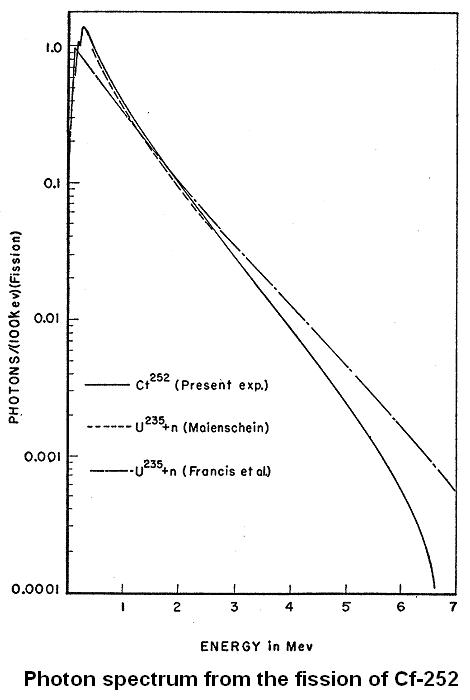Doppler Broadening
Theory of Dopler Broadening
Photon emmision along direction of fission fragment velocit
= amount of energy the gamma ray was shifted by
where is the Doppler-shifted -ray energy which was measured
=- for an excited fragment in det-1
=- for an excited fragment in det-2
is the polar emission angle of excited fragment and the fragment velocity
=0.04634
Our Calculations
For example for energy E=2617 keV and the fragment velocity v= cm/s(speed of light c=3x cm/s, =0.033, =0.999455352)
We obtained the following results for different angles between the direction of the fission fragment propagation and the direction of the gamma emission
(i) =
=2532.02 keV
(ii) =
=2618.43 keV
(iii) =
=2704.83 keV
FWHM(for energy 2617 keV)=2.5 keV(experimental data)
Energy difference -
Photon emission off fission fragment velocity axis
Cf-252 Fission
Photon Spectra from Cf-252
References: http://prola.aps.org/pdf/PR/v104/i3/p699_1
Smith, A. B.; Fields, P. R.; Friedman A. M., Physical Review, vol. 104, Issue 3, pp. 699 - 702
Measurements in the Beam test lab with HpGe and BC408
June 15,2007 Cf-252 measurements with HpGe & neutron sensitive scintillators in coincidence
June 19,2007 Cf-252 measurements with HpGe & neutron sensitive scintillators in coincidence
June 19,2007 Cf-252 measurements of gamma-spectrum using HpGe ungated
